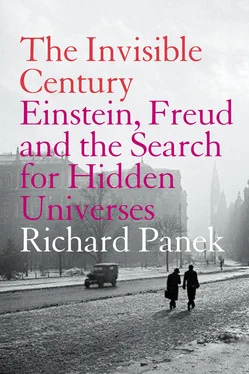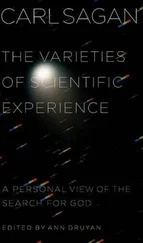Freud began composing the manuscript on the train ride from Berlin back home to Vienna that September. “I am writing so little to you only because I am writing so much for you,” Freud informed Fliess by letter on September 23. Barely two weeks later, on October 8, Freud mailed a draft to Fliess—a hundred or so handwritten pages in which he attempted to explain definitively the processes of the mind by describing exhaustively the mechanism of the brain that encases it.
And a mechanism it was. “The project,” Freud wrote, in the second sentence of the manuscript, “involves two principal ideas”: in essence, and in accord with Descartes’s philosophy and Newton’s physics, motion and matter. Freud’s principal idea number I was straightforward enough: that the workings of the brain are “subject to the general laws of motion”—that matter moves immediately adjacent matter with comprehensive cause-and-effect predictability. What contributed to Freud’s sense of urgency in composing this draft, however, was that he now knew what the “matter” was: “2. That it is to be assumed that the material particles in question are the neurons.” He based this assumption, as he made explicit several pages later, on “the knowledge of neurons which has been arrived at by modern histology.”
Yet even as he was passing the manuscript along to Fliess, Freud was starting to have his doubts. “I have been alternately proud and overjoyed and ashamed and miserable—until now, after an excess of mental torment, I apathetically tell myself: it does not yet, perhaps never will, hang together,” he wrote in the accompanying letter. “I am not succeeding with the mechanical elucidation; rather, I am inclined to listen to the quiet voice which tells me that my explanations are not yet adequate.”
In the weeks to come that inner voice softened briefly, then hardened again. “During one industrious night last week,” Freud wrote to Fliess on October 20, twelve days after posting the manuscript, “the barriers suddenly lifted, the veils dropped, and everything became transparent—from the details of the neuroses to the determinants of consciousness. Everything seemed to fall into place, the cogs meshed, I had the impression that the thing now really was a machine that shortly would function on its own.” On November 8, however, he reported that after other professional commitments had forced him to put the manuscript aside, he found he couldn’t stop thinking about it—specifically, he noted with regret, that “it required a lot of revision. At that moment,” he went on, “I rebelled against my tyrant. I felt overworked, irritated, confused, and incapable of mastering it all. So I flung it all aside. If you felt called on to form an opinion of those few sheets of paper that would justify my cry of joy at my victory, I am sorry, because you must have found it difficult.” Freud added that in another two months, after he’d fulfilled his obligations, “I may be able to get the whole thing clearer.” It was not to be. Only three weeks later he wrote to Fliess, “I no longer understand the state of mind in which I hatched the psychology; cannot conceive how I could have inflicted it on you. I believe you are still too polite; to me it appears to have been a kind of madness.”
Maybe so. Whatever it was, it was over now, as if a fever had broken. The problem that Freud had found himself confronting was larger than pathways of nerves, larger than the neuron itself—or, maybe, smaller. Either way, it was the same problem that had been haunting physiology since the inception of the modern era more than two centuries earlier: brain. To be precise, it was brain in opposition to what the motions of matter within the human cranium represent: mind, maybe.
For much of human history, such a distinction would have been secondary, at best. The far more important distinction, instead, would have been the one between two types of matter: terrestrial and celestial. Down here, as Aristotle had said, were the four elements—earth, air, fire, and water, either alone or in any number of combinations. Up there was one element—quintessence, a single perfect substance that constituted the moon, sun, planets and stars, as well as the spheres that carried them on their heavenly journeys. An Earth that itself traveled through the heavens, however, not only erased the crucial distinction between what was terrestrial and what was celestial but—as Descartes appreciated when he was merely a budding philosopher—presented a strong argument that everything in heaven and everything on Earth might ultimately consist of the same stuff.
Descartes first heard about Galileo’s discovery of four moons orbiting Jupiter in 1610, as a student at the Jesuit college at La Flèche. Although Descartes was only thirteen or fourteen when this astonishing news reached his outpost in the French countryside, he understood at once the profound effects such a discovery could have on philosophy and physics. The very scope of those effects, however, also reinforced for him two growing suspicions: that although philosophy “has been cultivated for many centuries by the most excellent minds,” as he later wrote, “there is still no point in it which is not disputed and hence doubtful”; and that as “for the other sciences, in so far as they borrow their principles from philosophy I decided that nothing solid could have been built upon such shaky foundations.” The only rational approach to this appalling and ongoing state of ignorance, he concluded, was to begin again, from the beginning—“to demolish everything completely and start right again from the foundations,” and to do so by seeking “no knowledge other than that which could be found in myself or else in the great book of the world.”
The World , in fact, was what he called his first attempt to explain all of physics. As was often the case with Descartes when he produced a work of physics, he simultaneously produced a companion work on how a reconception of physics would necessitate a new interpretation of man’s role in it—a new physiology. This work he called Treatise on Man . He completed both in 1633, a year after Galileo released his own attempt at a new physics, Dialogue Concerning the Two Chief World Systems . But before his two volumes could reach publication, Descartes heard that the Roman Catholic Church had condemned Galileo because the Dialogue posited a sun-centered universe. Since his own two essays did the same and since he feared that if he altered them in any way they would be “mangled,” Descartes suppressed both.
But he never stopped working on physics and physiology. In particular, over the next few years, he wondered if the newfound conceptual unity between the heavens and the Earth would allow him to achieve a parallel mathematical unity. In other words, could he do to the terrestrial realm what astronomers had long done to the celestial realm: geometricize it? Geometry, after all, had originally been an attempt to render the terrestrial world in mathematical terms. Now, after a lapse of a couple of millennia, it was again, and in his 1637 Geometry , Descartes demonstrated how all matter, not only in heaven but on Earth, could be located according to three coordinates in space. In which case, as Descartes himself recognized and as succeeding generations came to appreciate, a crucial question presented itself: Could we approach the secrets of man’s inner universe with the same heretofore unthinkable curiosity that Galileo and his successors had regarded the outer? Could we render the motions of matter within the brain as predictable as any planet’s through the heavens? In short, could there be a Newton of neurology?
Even while Newton was alive and evidence had begun to accumulate that his laws extend to the outermost reaches of the universe, the question inevitably had arisen whether those same laws might extend to the innermost reaches as well. In 1725, Richard Mead, an English physician, had produced mathematical formulations of the effects of planetary gravity on the human body. Expanding on that idea later in the eighteenth century, the German physician Franz Anton Mesmer proposed a gravitational attraction between animals, or what he called animal magnetism, whose existence he then claimed to demonstrate through public displays of hypnotism. In the early nineteenth century, efforts at quantifying psychic phenomena found a champion in the German philosopher Johann Friedrich Herbart, who conceived of the workings of the mind as “forces” rather than ideas, who explicitly invoked Newton in advocating the use of mathematical formulas to describe the motions of these forces, and who once declared, “Regular order in the human mind is wholly similar to that in the starry sky.”
Читать дальше











